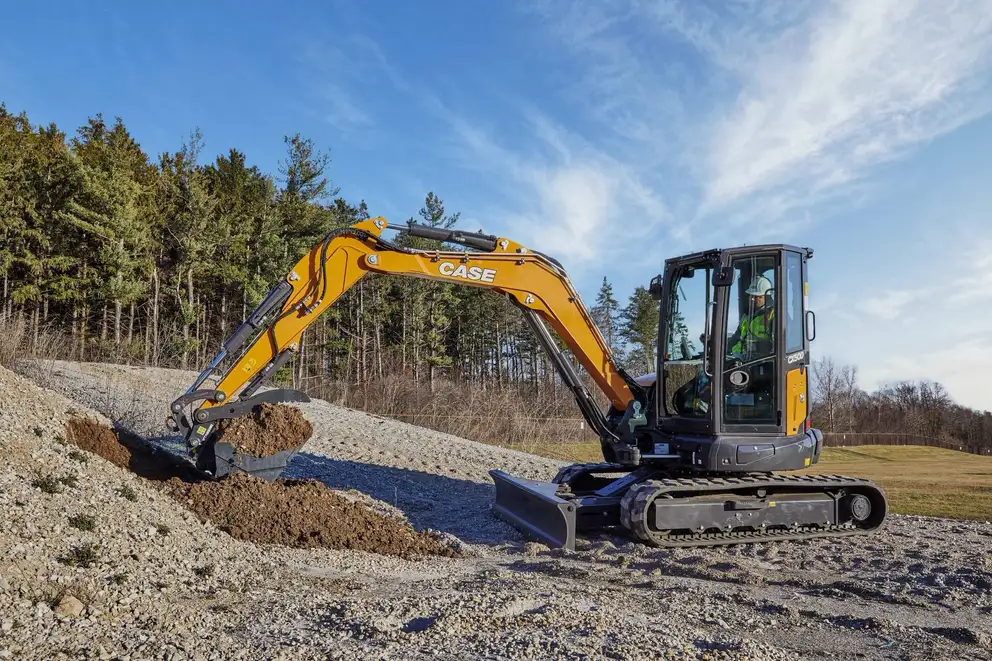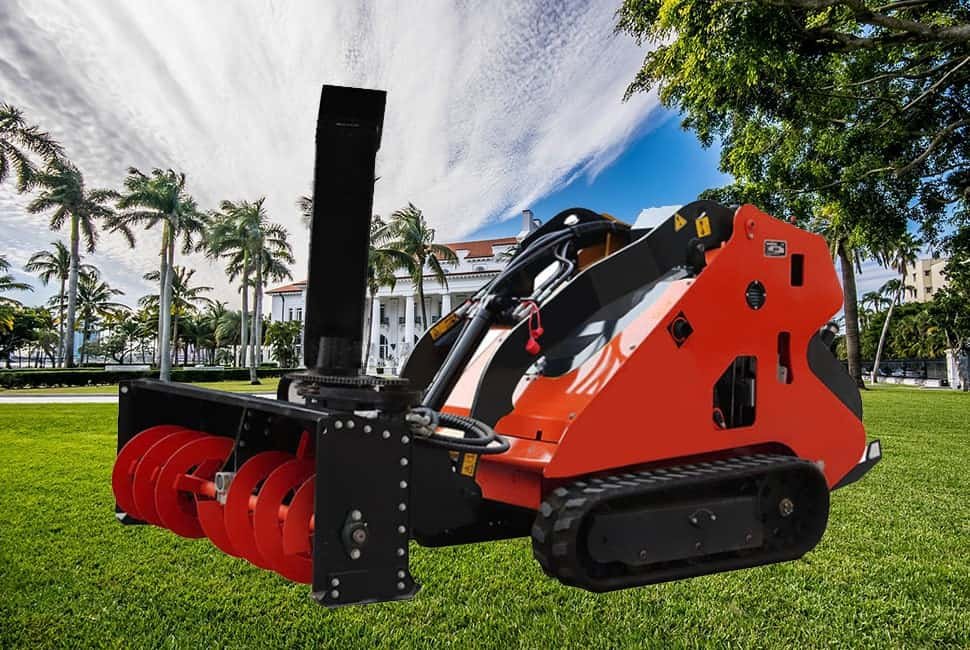Choosing the right mini excavator size can be tricky, especially with so many options available. Whether you’re tackling tight urban spaces or heavy-duty landscaping tasks, selecting the right size is crucial to ensure efficiency and cost-effectiveness. This article will help you navigate through the different mini excavator sizes to find the one that best suits your needs.
Mini excavators come in a variety of sizes, typically ranging from 1-ton to 8-ton models. The right size for your job depends on the type of work you’re doing, the space you have, and your budget. This guide will help you understand the key differences between sizes and how to make the best choice.
Now, let’s dive deeper into what defines a mini excavator and how the size impacts its performance.
What is a Mini Excavator?
A mini excavator is a compact, versatile construction machine specifically designed for digging, lifting, and earthmoving tasks in confined spaces. These machines are commonly used in residential, commercial, and industrial projects, making them an essential tool for a wide range of applications
Key Features of Mini Excavators
- Taille et poids:
Mini excavators are generally smaller than standard excavators, with a maximum operating weight of around 8 tons. This compact size allows them to navigate tight spaces with ease, making them ideal for projects where larger machines would be impractical.
- Maniabilité:
Despite their small size, mini excavators offer great maneuverability. They can easily navigate tight corners and confined areas, providing sufficient power for a variety of tasks. This makes them particularly useful in urban settings or small-scale projects where space is limited.
- Versatilité:
Mini excavators are widely used in industries such as landscaping, road construction, utility installation, and demolition. Their versatility allows them to handle a diverse range of tasks, from digging foundations to installing utility lines.
- Ease of Transport:
Unlike larger models, mini excavators are easier to transport. Their compact size means they can be moved quickly and efficiently, reducing downtime and increasing productivity. This makes them ideal for projects that require frequent relocation.
- Ground Protection:
These machines typically feature a rubber track system, which allows them to operate on uneven surfaces without damaging the ground beneath them. This is particularly important in sensitive areas, such as gardens, lawns, or finished surfaces, where minimizing ground disturbance is crucial.

Applications and Benefits
Mini excavators are indispensable in various industries due to their ability to perform tasks that larger machines cannot. Here are some key applications and benefits:
- Aménagement paysager:
Mini excavators are perfect for landscaping projects, where they can dig trenches, move soil, and prepare ground without causing significant damage to the surrounding area.
- Construction de routes:
In road construction, mini excavators can be used for tasks such as digging drainage ditches and preparing subgrades, all while fitting into tight spaces along roadways.
- Installation de services publics:
For utility installation, mini excavators can dig trenches for laying pipes and cables. Their compact size allows them to work in narrow spaces, reducing the need for extensive excavation.
- Démolition:
In demolition projects, mini excavators can be used to break down structures and remove debris. Their versatility and maneuverability make them ideal for working in tight spaces and around existing structures.

Mini excavators are a vital tool in the construction industry, offering a perfect balance of power, versatility, and maneuverability. Their compact size and rubber track system make them ideal for working in confined spaces and sensitive areas, while their ease of transport ensures they can be quickly moved to different job sites. Whether for landscaping, road construction, utility installation, or demolition, mini excavators provide a reliable and efficient solution for a wide range of tasks.
Common Mini Excavator Sizes and Their Applications
Mini excavators come in a variety of sizes, each tailored to meet the demands of different tasks. Understanding the differences between these sizes can help you select the right model for your specific job.
Mini Excavator Size Range
Mini excavators typically range from 1 to 8 tons, with each size category offering unique capabilities and applications. Here’s a detailed look at the different sizes and their ideal uses:
1-Ton Mini Excavators
- Poids: 1 ton
- Idéal pour: Small landscaping projects, residential work, and tasks in tight spaces such as backyards or areas with limited access.
- Principales fonctionnalités: Ultra-compact design, perfect for small digging jobs, trenching, and digging up plants. These machines are highly maneuverable and can fit into very tight spaces, making them ideal for delicate tasks in confined areas.
2-Ton and 3-Ton Mini Excavators
- Poids: 2 to 3 tons
- Idéal pour: Small to medium construction projects, digging foundations, and general landscaping tasks.
- Principales fonctionnalités: These are the most commonly used mini excavators. They offer a good balance of power and maneuverability, making them versatile for a wide range of tasks. They can fit through standard gates and doorways, which is particularly useful in urban settings where space is limited.
5-Ton Mini Excavators

- Poids: 5 tons
- Idéal pour: Medium to large construction projects, utility work, and small-scale demolition tasks.
- Principales fonctionnalités: These machines offer a good balance between size, lifting power, and versatility. They are powerful enough to handle more demanding tasks while still maintaining the ability to navigate tight spaces. They are often used in construction sites and utility installations where a bit more power is needed.
8-Ton Mini Excavators
- Poids: 8 tons
- Idéal pour: Heavy-duty tasks such as moving large debris, digging deeper trenches, and working with denser soil.
- Principales fonctionnalités: These larger models are designed for commercial construction projects where additional power is required. They can handle more substantial loads and deeper excavations, making them suitable for tasks that smaller models cannot manage. Despite their size, they are still compact enough to fit into areas where larger excavators would struggle.
Choosing the Right Mini Excavator
When selecting a mini excavator, consider the specific requirements of your project. Key factors to consider include:
- Project Size and Scope: Larger projects may require more powerful machines, while smaller tasks can be handled by lighter models.
- Space Constraints: If you are working in tight spaces, such as urban areas or residential backyards, a smaller, more maneuverable model may be necessary.
- Task Requirements: Different tasks require different capabilities. For example, digging foundations may need a more powerful excavator, while landscaping might be handled by a smaller model.
- Transportation and Accessibility: Consider how the machine will be transported to and around the job site. Smaller models are generally easier to transport and can access areas that larger machines cannot.
Mini excavators are incredibly versatile machines, available in a range of sizes to suit various tasks and environments. By understanding the differences between the sizes and their capabilities, you can select the right model for your project. Whether you need a compact 1-ton excavator for small landscaping jobs or a powerful 8-ton model for heavy-duty construction, there is a mini excavator designed to meet your needs.

How to Choose the Right Mini Excavator Size for Your Job
Selecting the right size mini excavator requires evaluating the scope of your project, the type of soil, and the available working space. Let’s explore how to make the right choice.
To choose the right mini excavator, consider factors like the project scale, site access, and job type. If you’re working in tight spaces, a smaller model might be more suitable, while larger jobs may require more powerful models.
- Site Access: If you’re working in an area with narrow access, such as between buildings or in backyards, a 1-ton or 2-ton mini excavator would be ideal. These models are highly maneuverable and can easily navigate tight spaces.
- Project Type: For light tasks like landscaping or trenching, smaller mini excavators will do the job efficiently. For heavier tasks like digging foundations, lifting heavy materials, or demolition, consider models in the 5-ton to 8-ton range.
- Soil and Terrain: If you’re working on hard ground or rocky terrain, a larger excavator may be necessary. Smaller excavators might struggle with dense soil or tough rocks, while larger machines can handle tougher conditions.
What is the Performance Difference Between Mini Excavator Sizes?
Different sizes of mini excavators come with distinct performance characteristics. Let’s look at how these differences affect their capability and efficiency in various tasks.
Smaller mini excavators are ideal for tight spaces and light tasks, but they lack the power and reach of their larger counterparts. Larger mini excavators offer more digging depth, greater lifting capacity, and higher engine power.
- Smaller Models (1-3 tons): These machines are designed for tasks in confined spaces. They may offer less digging depth (around 7 to 8 feet) and lifting capacity, but their agility and ease of transport make them perfect for residential and small commercial projects.
- Larger Models (5-8 tons): These machines provide more power, higher digging depths (up to 13 feet or more), and improved lifting capacity. Their versatility allows them to be used in medium to large-scale construction jobs, such as trenching for utilities or small-scale demolition. They can also work faster, which can help improve project timelines.
Advantages and Disadvantages of Different Mini Excavator Sizes
Each size of mini excavator offers distinct benefits and drawbacks. Let’s take a closer look at the pros and cons of different sizes to help you decide what works best for your needs.
Smaller mini excavators are easier to transport and navigate tight spaces, but they may not have the power or digging depth needed for larger projects. Larger models offer more power but are less maneuverable and costlier to transport.
- Advantages of Small Excavators (1-3 tons): These models are lightweight, compact, and ideal for working in areas with limited space. They are also more affordable and easier to transport on smaller trailers.
- Advantages of Larger Excavators (5-8 tons): Larger models are perfect for tougher, larger-scale jobs. They offer increased power, higher lifting capacities, and better digging depth. However, they may struggle with maneuverability in tight spaces and cost more to transport.

Top Mini Excavator Models by Size
Several mini excavator models stand out in the market based on their size, performance, and reliability. Let’s review some of the top choices by size.
Popular mini excavator models include the Kubota KX018-4 (1.8 tons), Caterpillar 303.5 CR (3.5 tons), Bobcat E165 (5 tons), and Takeuchi TB290 (8 tons). These machines are known for their durability, performance, and wide range of applications.
- Kubota KX018-4: This 1.8-ton model is highly maneuverable and is perfect for small to medium jobs, such as landscaping and utility installations.
- Caterpillar 303.5 CR: A 3.5-ton model designed for high performance, offering great digging depth and lifting power, perfect for small construction jobs.
- Bobcat E165: This 5-ton model provides excellent lifting capacity and digging depth, suitable for medium-sized construction projects.
- Takeuchi TB290: A top choice for those needing an 8-ton mini excavator. It offers incredible strength and performance, ideal for demanding tasks like demolition and utility installation.
Résumé
Choosing the right mini excavator size ensures you complete tasks efficiently and within budget. Consider factors like space, task requirements, and soil conditions to find the best machine for your project.


